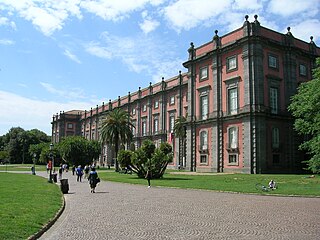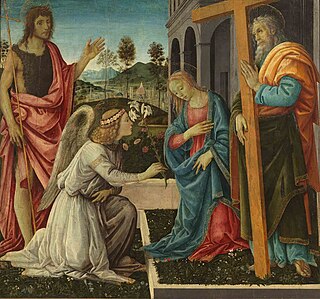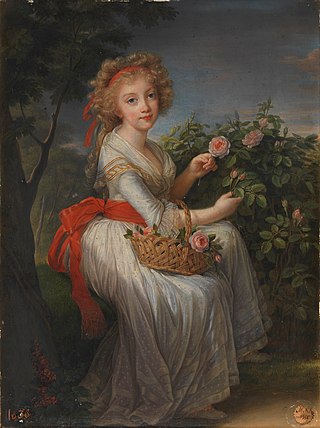
In Greek mythology, Silenus was a companion and tutor to the wine god Dionysus. He is typically older than the satyrs of the Dionysian retinue (thiasos), and sometimes considerably older, in which case he may be referred to as a Papposilenus. Silen and its plural sileni refer to the mythological figure as a type that is sometimes thought to be differentiated from a satyr by having the attributes of a horse rather than a goat, though usage of the two words is not consistent enough to permit a sharp distinction.

Jusepe de Ribera was a Spanish painter and printmaker. Ribera, Francisco de Zurbarán, Bartolomé Esteban Murillo, and the singular Diego Velázquez, are regarded as the major artists of Spanish Baroque painting. Referring to a series of Ribera exhibitions held in the late 20th century, Philippe de Montebello wrote "If Ribera's status as the undisputed protagonist of Neapolitan painting had ever been in doubt, it was no longer. Indeed, to many it seemed that Ribera emerged from these exhibitions as not simply the greatest Neapolitan artist of his age but one of the outstanding European masters of the seventeenth century." Jusepe de Ribera has also been referred to as José de Ribera, Josep de Ribera, and Lo Spagnoletto by his contemporaries, early historians, and biographers.

Museo di Capodimonte is an art museum located in the Palace of Capodimonte, a grand Bourbon palazzo in Naples, Italy designed by Giovanni Antonio Medrano. The museum is the prime repository of Neapolitan painting and decorative art, with several important works from other Italian schools of painting, and some important ancient Roman sculptures. It is one of the largest museums in Italy. The museum was inaugurated in 1957.

The Flagellation of Christ is a painting by the Italian Baroque painter Caravaggio, now in the Museo Nazionale di Capodimonte, Naples. It is dated to 1607, and may have been reworked by the artist in 1610. It is not to be confused with Christ at the Column, another Flagellation by Caravaggio of the same period.

The Royal Palace of Capodimonte is a large palazzo in Naples, Italy. It was formerly the summer residence and hunting lodge of the Bourbon kings of the Two Sicilies, one of the two royal palaces in Naples. Today, it comprises the National Museum of Capodimonte and the Royal Forest. The palace was constructed on its somewhat cooler hilltop location just outside the city, with urban Naples ultimately expanding around it.

El Soplón or Boy Blowing on an Ember is a 1571-1572 oil on canvas painting by El Greco, produced during his stay in Rome and inspired by a passage in Pliny the Elder's Naturalis historia. It and Portrait of Giulio Clovio are among the first of his paintings of figures. He later re-used the figure for The Fable (1580).

Annunciation with St John the Baptist and St Andrew is a c.1485 oil-on-panel painting by Filippino Lippi. An early work by the artist, it shows an Annunciation scene between John the Baptist and Andrew.

Sacrificial Scene is a grisaille tempera on canvas painting by Pontormo, produced around 1520 and now in the National Museum of Capodimonte in Naples. It was probably originally produced as part of the decoration of an interior in honour of Cosimo de' Medici.

Charles III's Departure for Spain, Seen from the Sea is a 1759 oil on canvas painting by Antonio Joli, showing Charles leaving Naples to be crowned king of Spain after the death of his two elder brothers. It and its pair Charles III's Departure for Spain, Seen from the Land are now in the National Museum of Capodimonte in Naples.

Assumption of the Virgin with Saint John the Baptist and Saint Catherine of Alexandria is an oil-on-panel painting by the Italian Renaissance painter Fra Bartolomeo, created c. 1516, commissioned by the church of Santa Maria in Castello in Prato. To the left of the Virgin's tomb is John the Baptist, whilst to the right is Catherine of Alexandria. It is now in the National Museum of Capodimonte in Naples.

Ferdinand I and His Family is a 1782 oil-on-canvas painting by the Swiss artist Angelica Kauffman, now in the National Museum of Capodimonte in Naples.

Portrait of Princess Maria Christina is an oil-on-canvas painting executed c. 1790 by Élisabeth Vigée Le Brun. It was commissioned by Maria Christina's parents Maria Carolina of Austria and Ferdinand I of the Two Sicilies. Vigée Le Brun had taken refuge in Naples after fleeing Paris in 1789 during the French Revolution.

Portrait of Maria Luisa of Parma is a portrait of Maria Luisa of Parma, wife of Charles IV of Spain, produced as a pendant painting to a portrait of her husband. Both works were long thought to be a copy after an autograph work by Francisco Goya, but they have now been definitively reattributed as autograph works by Goya himself, produced late in the 18th century. Goya was a court artist to the royal family, though most of his paintings of them are still in the Prado Museum. The two works were commissioned by the couple's daughter Maria Isabella of Spain. They were sent to Maria Isabella and they are both now in the National Museum of Capodimonte in Naples.

Portrait of Philip II is an oil on canvas portrait by Titian of Philip II of Spain wearing the chain of the Order of the Golden Fleece. It is in the collection of the Museo di Capodimonte, in Naples.

Equestrian Portrait of Amalia of Saxony is a mid-18th century portrait of Maria Amalia of Saxony, produced by Francesco Liani towards the end of her and her husband's rule in Naples before he became Charles III of Spain. It shows its subject in male hunting dress and is modelled on Louis Silvestre II's portrait of Maria's father Augustus III of Poland. Liani also produced a pair of her husband - both works are now in Room 34 of the National Museum of Capodimonte in Naples.

Penitent Magdalene is a c. 1550 oil on canvas painting by Titian, now in the Museo di Capodimonte in Naples.

Portrait of Cardinal Alessandro Farnese is a c. 1545–46 oil on canvas three-quarter-length portrait of Alessandro Farnese the Younger (1520–1589) by Titian, now in the Museo nazionale di Capodimonte in Naples.

Portrait of Pope Paul III with Camauro is a 1545 – 1546 oil on canvas painting by Titian, now in the Museo nazionale di Capodimonte in Naples.

Saint John the Baptist is a c.1653-1656 oil on canvas painting by Mattia Preti, now in the Museo nazionale di Capodimonte in Naples.

Apollo and Marsyas is a 1637 oil on canvas painting by Jusepe de Ribera, now in the Museo nazionale di Capodimonte in Naples. Heavily influenced by Caravaggio, he produced another version, also in 1637, now in the Royal Museums of Fine Arts of Belgium in Brussels.




















